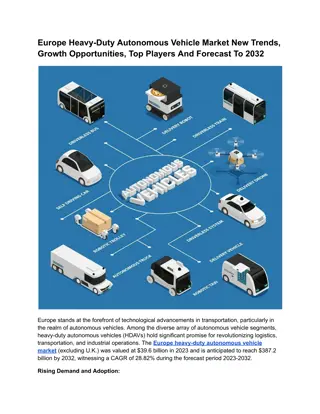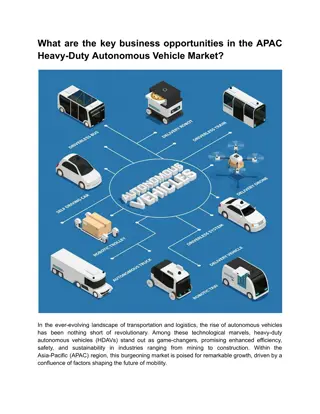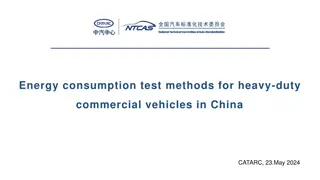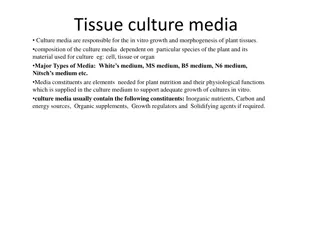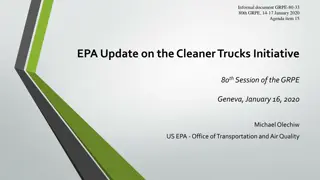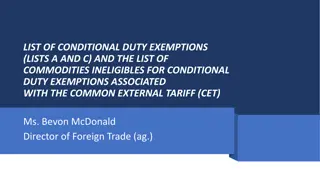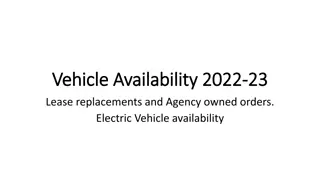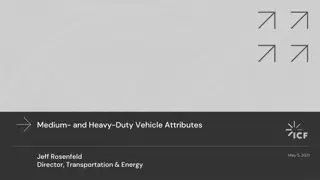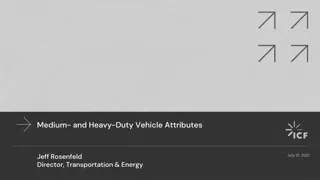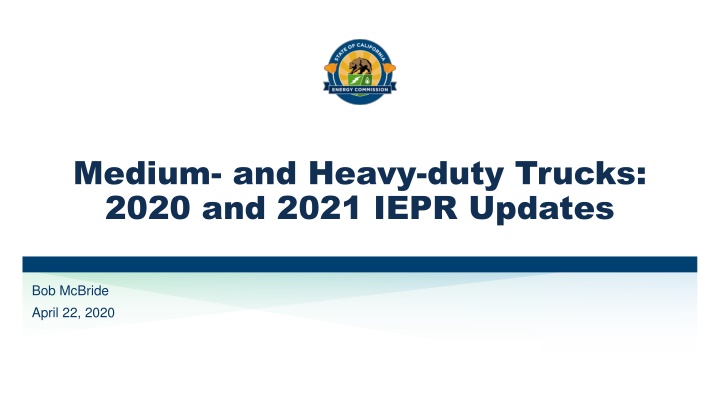
Medium- and Heavy-duty Trucks 2020-2021 IEPR Updates
This article discusses updates for medium- and heavy-duty trucks in the years 2020 and 2021 under the IEPR. It covers topics such as truck choice models, vehicle retirement methods, economic growth impacts, and plans related to truck retirement and used trucks. The content also includes examples of new and used trucks acquired based on fleet sizes from 2010 to 2018.
Uploaded on | 0 Views
Download Presentation

Please find below an Image/Link to download the presentation.
The content on the website is provided AS IS for your information and personal use only. It may not be sold, licensed, or shared on other websites without obtaining consent from the author. If you encounter any issues during the download, it is possible that the publisher has removed the file from their server.
You are allowed to download the files provided on this website for personal or commercial use, subject to the condition that they are used lawfully. All files are the property of their respective owners.
The content on the website is provided AS IS for your information and personal use only. It may not be sold, licensed, or shared on other websites without obtaining consent from the author.
E N D
Presentation Transcript
Medium- and Heavy-duty Trucks: 2020 and 2021 IEPR Updates Bob McBride April 22, 2020
Truck Choice and Freight Model Updates For 2020 IEPR Update Vehicle retirement method work under way Seeking data on scenarios for MD/HD truck incentives Compare to Advanced Clean Truck Proposed Regulation Economic growth and goods movement growth updates For 2021 IEPR Review, compare, and select from two truck choice models Argonne Truck 5 model Sandia Labs 2015 paper Possible infrastructure cost module Goods movement from Freight Analysis Framework v.5 Influence of Advanced Clean Truck Proposed Regulation 2
PLANS FOR PLANS FOR IEPR IEPR 2020 UPDATE 2020 UPDATE Medium- and Heavy-duty Trucks and Movement 3
Truck Retirement and Used Trucks For IEPR 2019, we used two time periods from EMFAC2017 High turnover in High demand and Low turnover in Low demand Resulting retirement rate is complicated by acquisition of used trucks Currently comparing EMFAC and TEFU MD/HD truck data in historical years Base year truck stock from TEFU analysis of DMV data, informed by EMFAC interstate tractor-trailer data Historical years of retirement / turnover data will be grouped based on alignment with forecast scenarios We plan to retain three retirement scenarios: Low, Mid, and High Again, turnover to align with demand scenario May use different periods of historical data to represent turnover scenarios 4
Example of New and Used Trucks Acquired Class 4 and 5 Trucks of 2010 Model Year Fleet Size 2010 2011 2012 2013 2014 2015 2016 2017 2018 fleet size 1 and 2 156 182 179 173 172 186 229 263 271 fleet size 3 to 6 137 178 165 157 172 201 200 240 247 fleet size 7 to 10 89 80 107 99 93 96 126 102 104 fleet size 11 to 40 162 262 256 265 273 268 246 239 283 fleet size 41 to 100 86 80 97 99 115 141 118 138 138 fleet size 101 to 1000 171 180 213 202 210 193 185 179 179 fleet size over 1000 233 273 242 249 229 211 189 151 145 Total 1,034 1,235 1,259 1,244 1,274 1,301 1,315 1,319 1,323 Source: Staff analysis of DMV data 5
Options for Adjusting Forecast Economic Growth in Goods Movement Goods movement dominates MD-HD truck fuel use Update to Freight Analysis Framework 4.5 (FAF45, 2019) forecast Five year interval data from 2015 to 2045 in three cases FAF is origin-destination (OD) regional data, six regions in California IHS Global Insight (FAF45 contractor) more optimistic than Moody's China trade agreement and COVID-19 have changed forecast conditions Alternate forecast growth might be mapped to scale the FAF45 Moody s Analytics data is zonal (Counties), reports GSP or employees However, ton-mile growth would be best surrogate for fuel use Calling for forecasts, ideally of ton-miles, including the impact of COVID-19 6
Goods Movement Measures Indexed Tons and ton-miles of movement, GSP for Truck Transportation Sources: FHWA, Moody's Analytics 7
Daily Vehicle Miles Travelled in 2020 Interstate 710 Northbound 300 Thousands 250 Vehicle Miles to I-710 Milepost 2.5 200 150 100 50 0 2/16 2/23 3/1 3/8 3/15 Date in 2020 3/22 3/29 4/5 4/12 4/19 Source: Caltrans Performance Monitoring System (PeMS) data for 2020 8
Advanced Clean Truck Rule Advanced Clean Trucks Regulation (ACT) rulemaking Public Hearing occurred December 2019; Air Resources Board action is anticipated Multiple compliance pathways depend on: Fleet size and composition Fleet owner preferences TCO approach in ACT ISOR, etc., considers fewer fuel types TEFU truck choice models consider all fuels, expect different shares Fate of Low NOx new trucks depends on final rule For 2020, ACT compliance to remain outside truck choice model Results of truck choice will be compared to a timely final ACT rule 9
PLANS FOR IEPR 2021 PLANS FOR IEPR 2021 Medium- and Heavy-duty Trucks and Movement 10
Plans for 2021 IEPR Test a second truck choice model (Sandia Labs) Compare utility of fuel types for new trucks Modified to incorporate an adoption S-curve from Argonne Truck 5 Potential for analysis by fleet size Modified to have the option to include infrastructure costs Compare outcomes of Argonne and Sandia models Key infrastructure cost module inputs required Current and future costs of charging equipment given electrical capacity Proportion of fleet bases with access to suitable electrical capacity Consider cost of transmission upgrades or a constraint to maximum fleet size Make-ready cost not borne by fleet Include Freight Analysis Framework version 5 data, other updates 11
Call for Incentive and Infrastructure Data Following this meeting, we will ask you these questions by email Does or will your organization incentivize MD-HD vehicles or fueling/charging infrastructure? Incentivized vehicle types, cost and quantity Incentivized infrastructure, cost and quantity What incentive stacking is allowed? Planned? What limitations to stacking incentives are you aware of? What data can inform the fraction of fleet home bases with access to higher electric capacity? What additional related data might inform our understanding of incentives and infrastructure development? 12
Thank You! Questions? Comments? Contributors: Aniss Bahreinian Jesse Gage Heidi Javanbakht Alex Lonsdale

